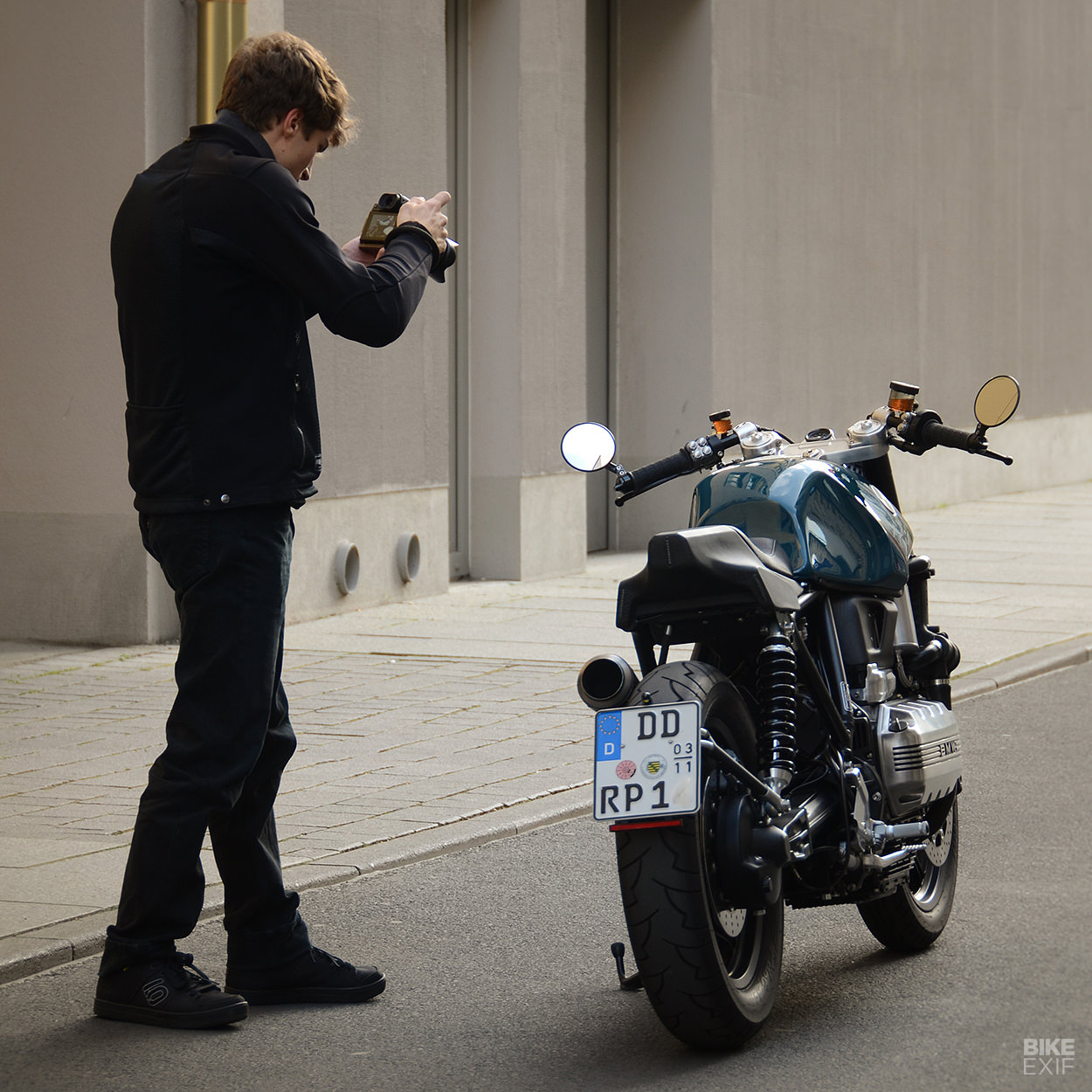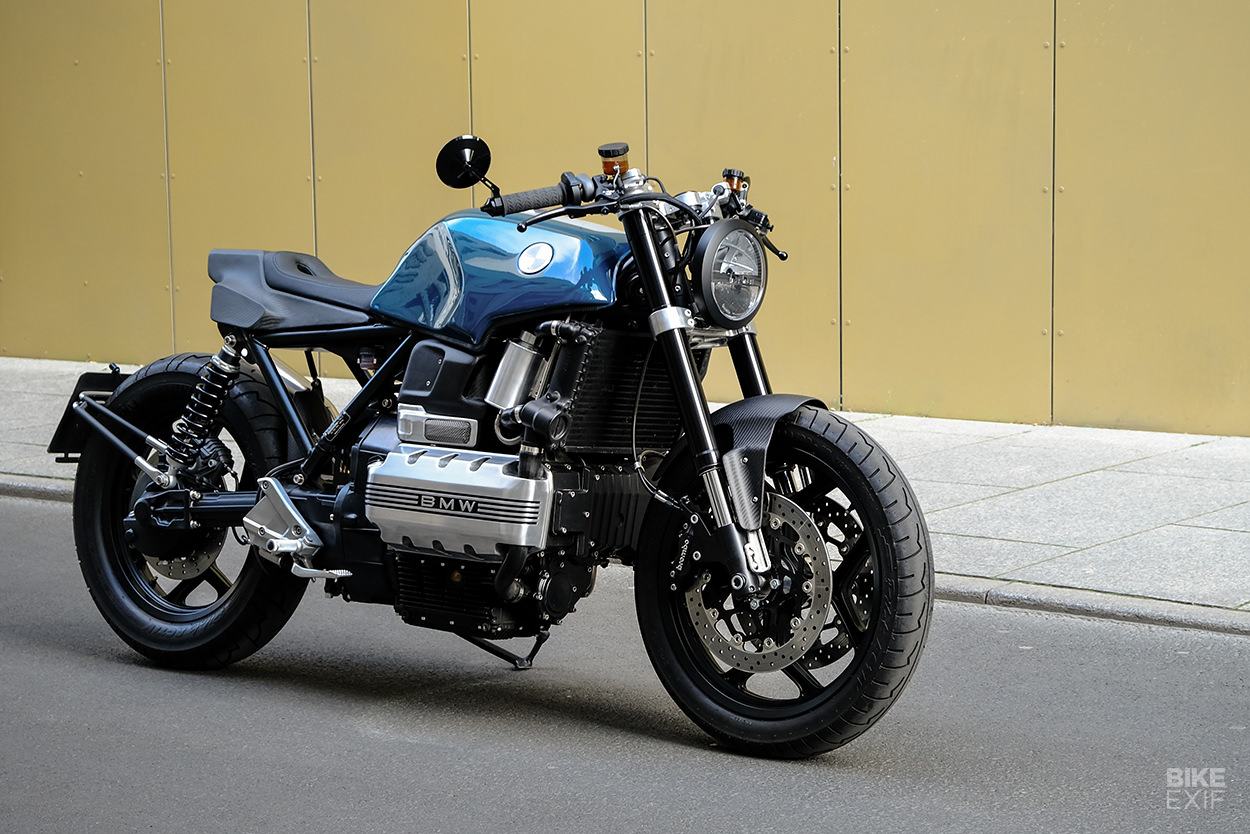
If there’s anything we like better than discovering a new builder, it’s discovering a young builder with potentially decades of work ahead of them.
The creator of this crisp and very professional custom BMW K100 is Richard Petzold, a 22-year-old who is studying Energy Technologies in Dresden. And he’s already won an award for his work.

“Bike EXIF has been the biggest source of inspiration for me over the past two years, and that basically pushed me to start my own little project,” he tells us. “It started before I even had my motorcycle license, but now the K100 is my ‘daily’.”
There’s a lot of design and fabrication going on here too, with Richard using his parents’ garage as a base and delving into the world of 3D printing. His K100 is also completely street legal in Germany, which is an achievement in itself. “That’s why you won’t see any open air filters or welds on the frame—as sad as that is.”
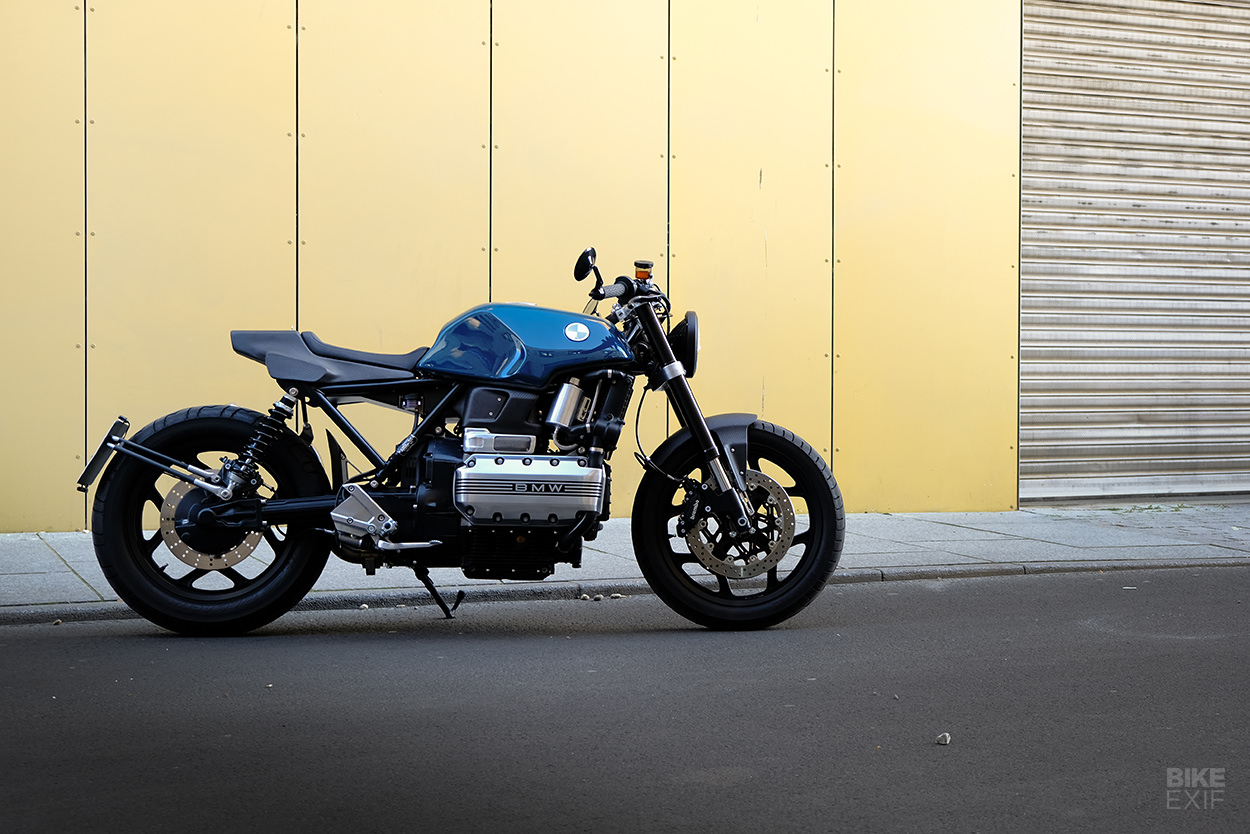
The base bike is a 1991 K100, making it over 30 years old. It’s the ‘LT’ model, which came with a higher screen than standard and pumped out around 90 hp from the fuel-injected, longitudinal inline-4.
“The engine is rebuilt, but basically stock,” Richard says. “With open air filters, the engine only sucks in the warm air of the radiator. I did try shorter intake tubes, but ended up with lower torque at low rpms.”
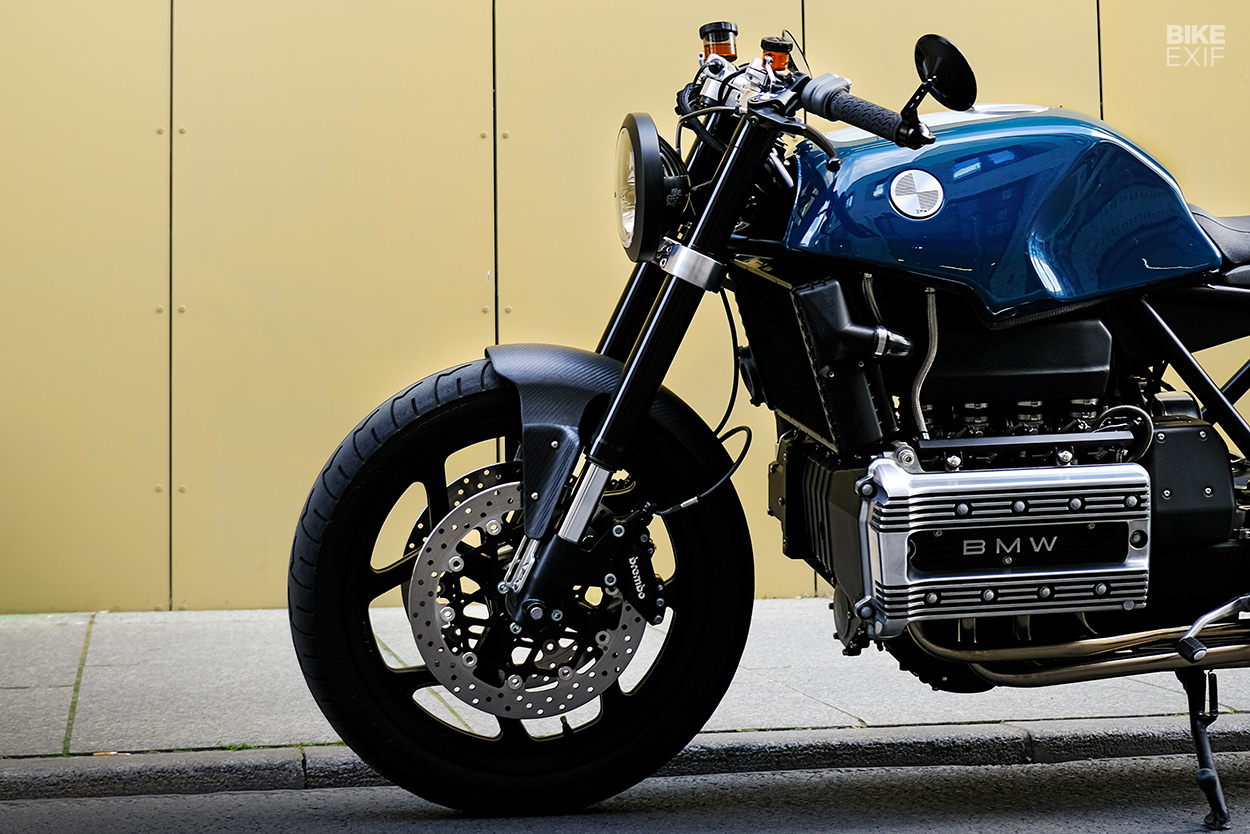
“In my opinion, the stock setup is the best for the road if you don’t do open alpha-n programming [airflow optimization], which sadly was not within my budget.” Instead, Richard has optimized the final drive ratio for his riding style, by switching to taller 31/11 gearing.
He’s also fitted a hydraulic clutch conversion, using an R nineT slave cylinder and machining a new pushrod.
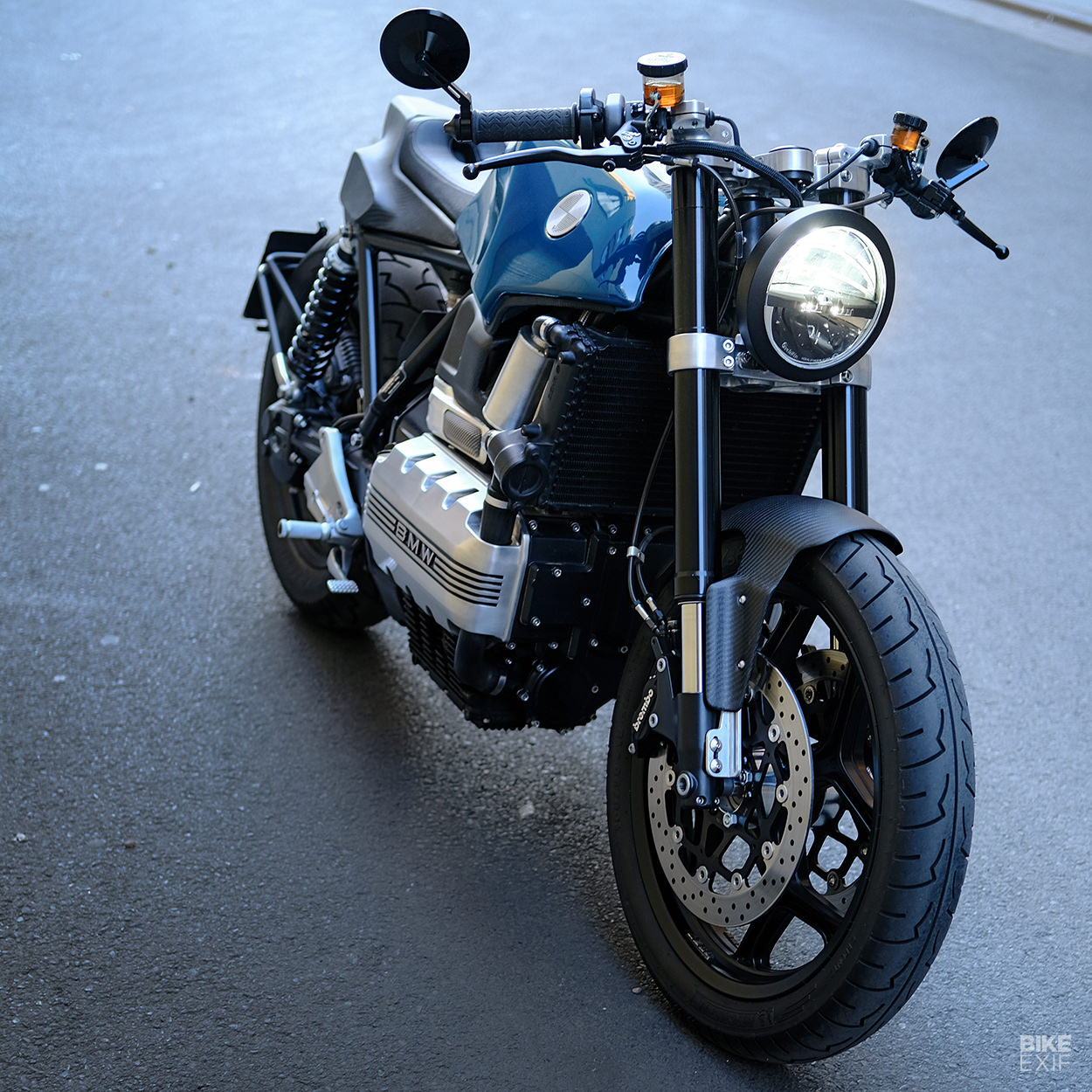
A more obvious change is a switch to Moto Guzzi V11 forks, for more refined handling. These are Marzocchi USD units, and are matched to Brembo P34 four-piston brake calipers and 320 mm disks—which Richard has adapted to the original K100 Y-spoke front wheel.
The wheels are wrapped with carbon fiber front and rear fenders, using molds that Richard 3D-printed, and the rear shocks are now Wilbers units.
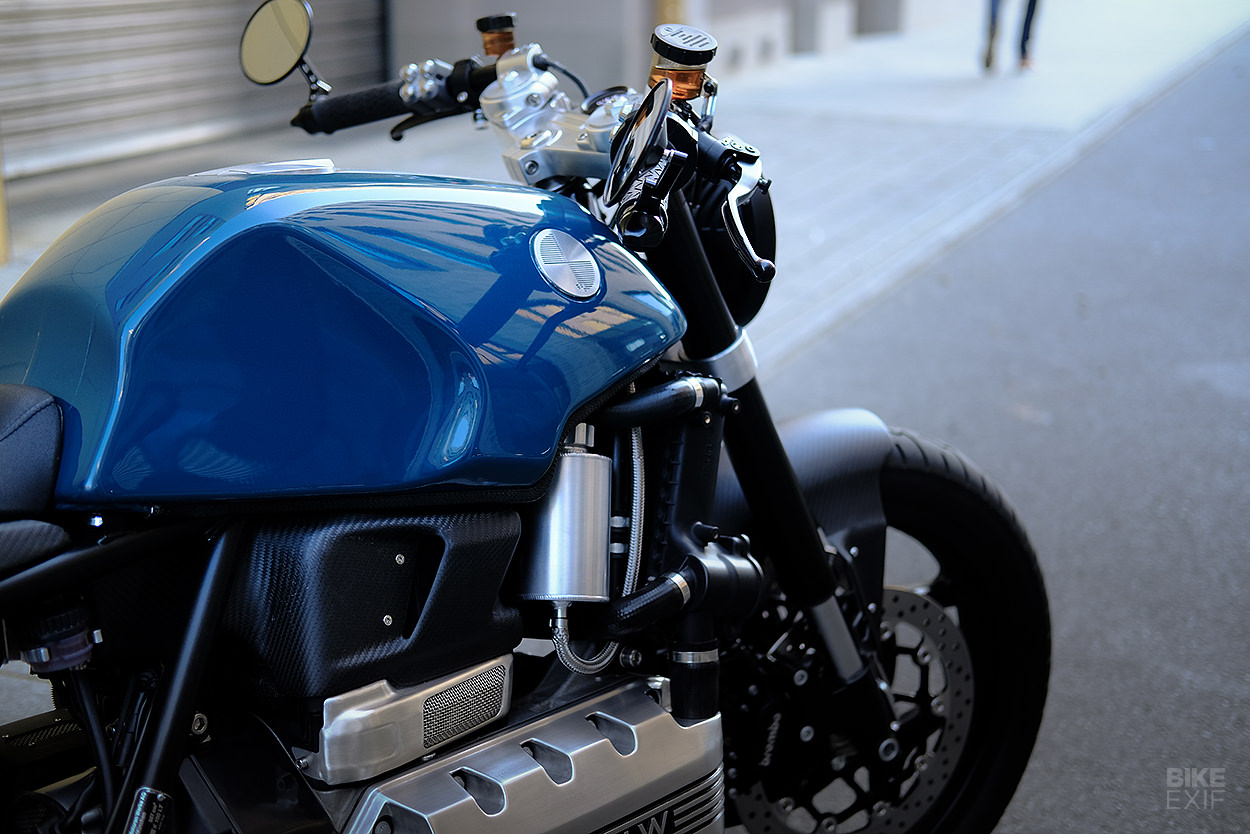
There are two airbox covers: the upper one is carbon fiber, taken from a mold that Richard first shaped in clay. The lower one is pressed out of aluminum, for an appealing contrast.
Richard 3D printed the aluminum design first, then made two molds from carbon-reinforced resin, and finally pressed the metal into them. He used a similar technique for the carbon fiber alternator cover, and has fabricated a new coolant overflow reservoir from aluminum too.
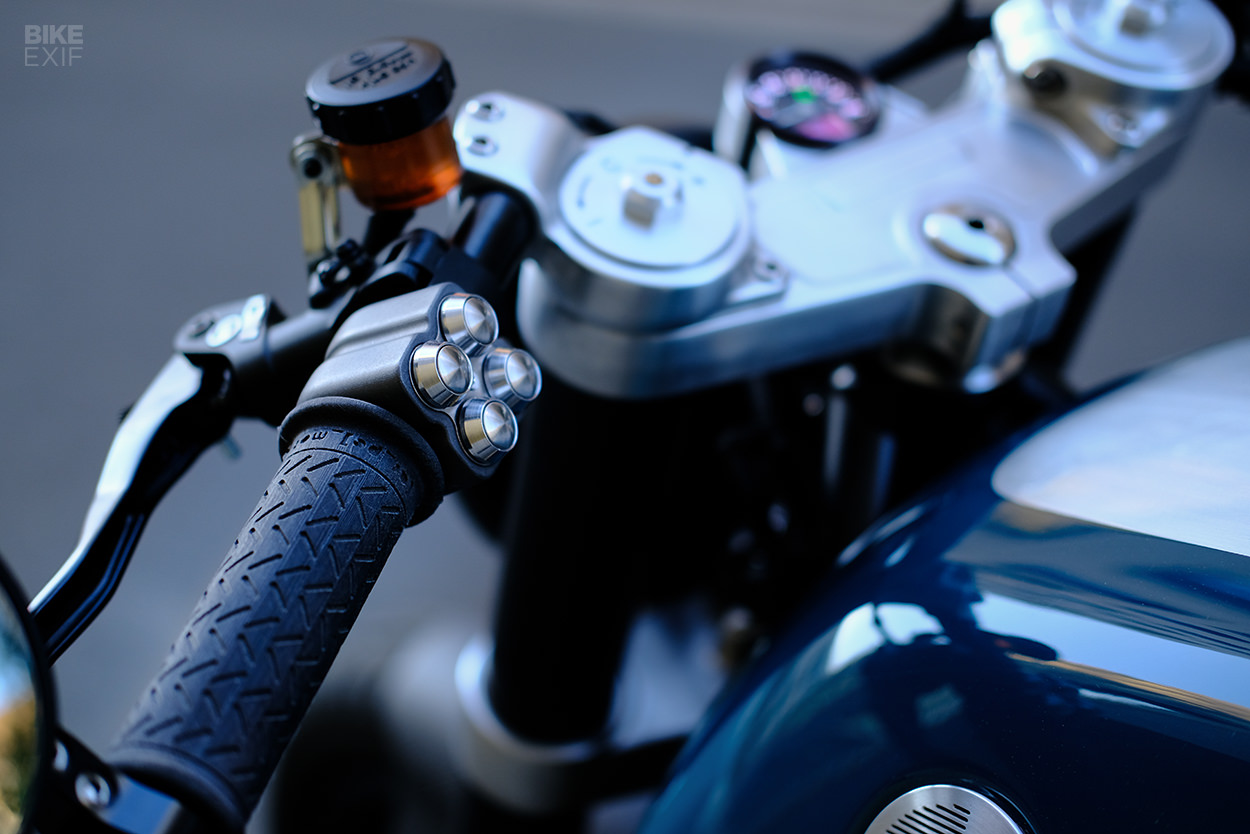
Other fully custom parts are the buttons, which are 3D printed, laser cut and painted. The cost for them was around $25—“Quite a bit cheaper than most stuff you can buy!”
Richard also made the grips himself, pouring them out of silicone. But he did hit up the catalogs for a few other parts, such as the Truck-Lite LED headlight, the Highsider bar end turn signals and mirrors, and a speedo from MMB. Plus the Magura brake and clutch levers.
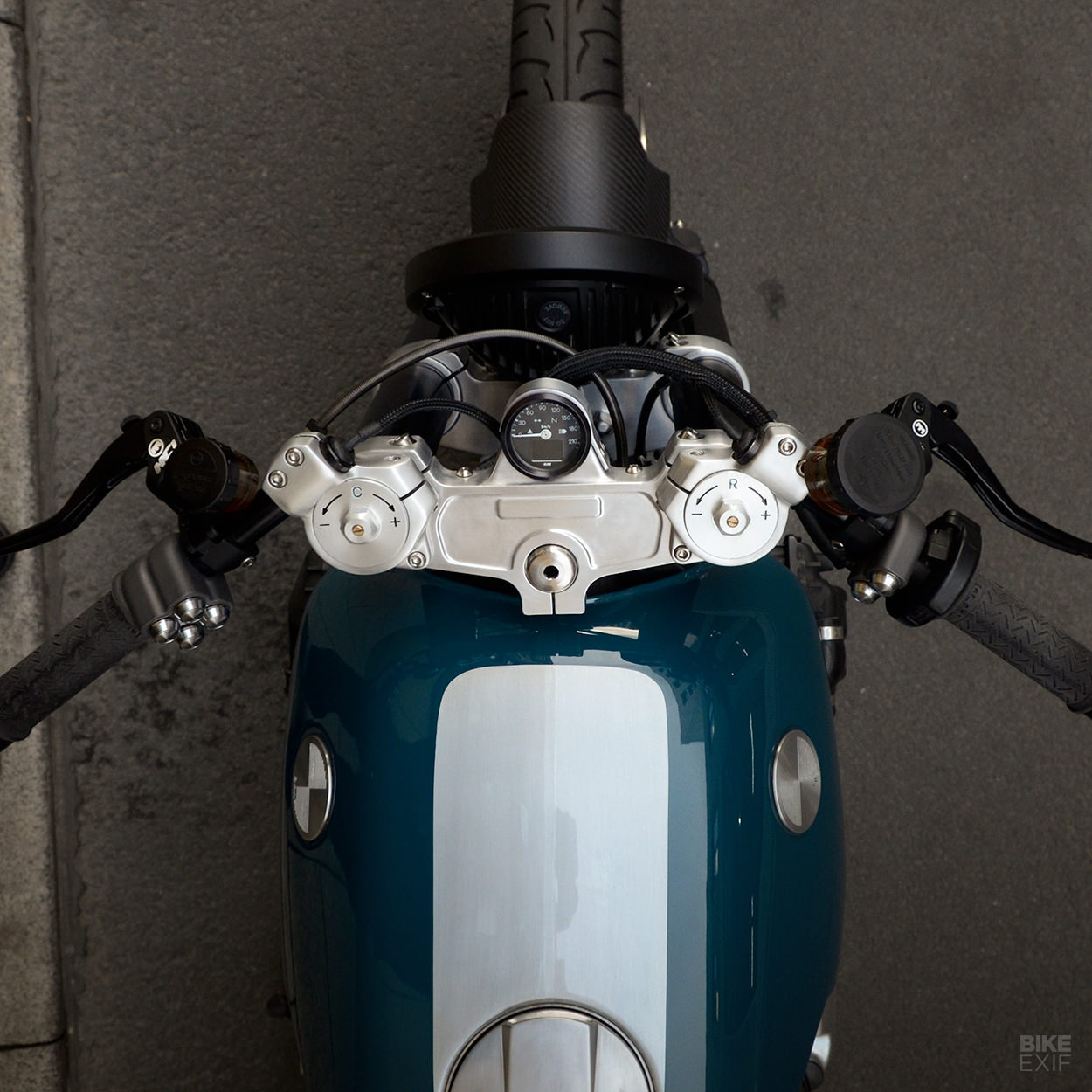
The perennial problem with the BMW K100—and all K-series bikes, really—is getting the tank to sit well with other mods. The odd angles make it very hard to get clean lines.
But Richard’s solution is one of the best we’ve seen: the new airboxes draw the eye away, and there’s a new tail unit that stops the bottom of the tank looking too disjointed.

This unit is built from carbon fiber, and we’re detecting hints of Husqvarna ‘Pilen styling. It integrates the rear light, turn signals and an electronics tray. Richard used a mold machined from foam, and the seat itself weighs a mere (12 ounces). The electronics and a Motogadget mo.unit are concealed underneath.
The low-slung exhaust system comes from EXIF regulars Unit Garage, but Richard has modified the muffler and end pipe—by subtly widening the pipe so that the dB killer elements can extend into it.
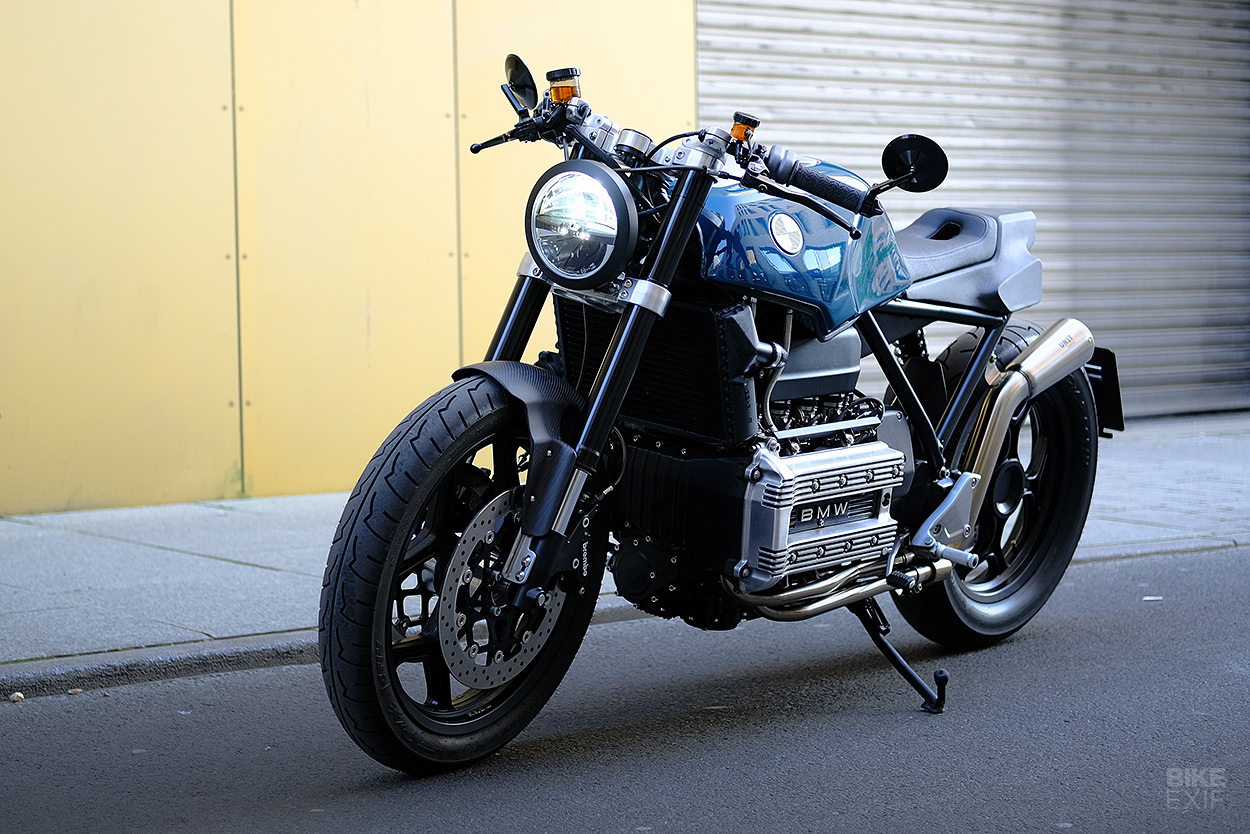
A CFD (Computational Fluid Dynamics) analysis ensured that flow is still good, and the noise levels are within legal limits.
After installing new laser cut tank emblems and a carbon fiber license plate holder, the K100 was finished. And we’re not the only ones who think it looks brilliant.
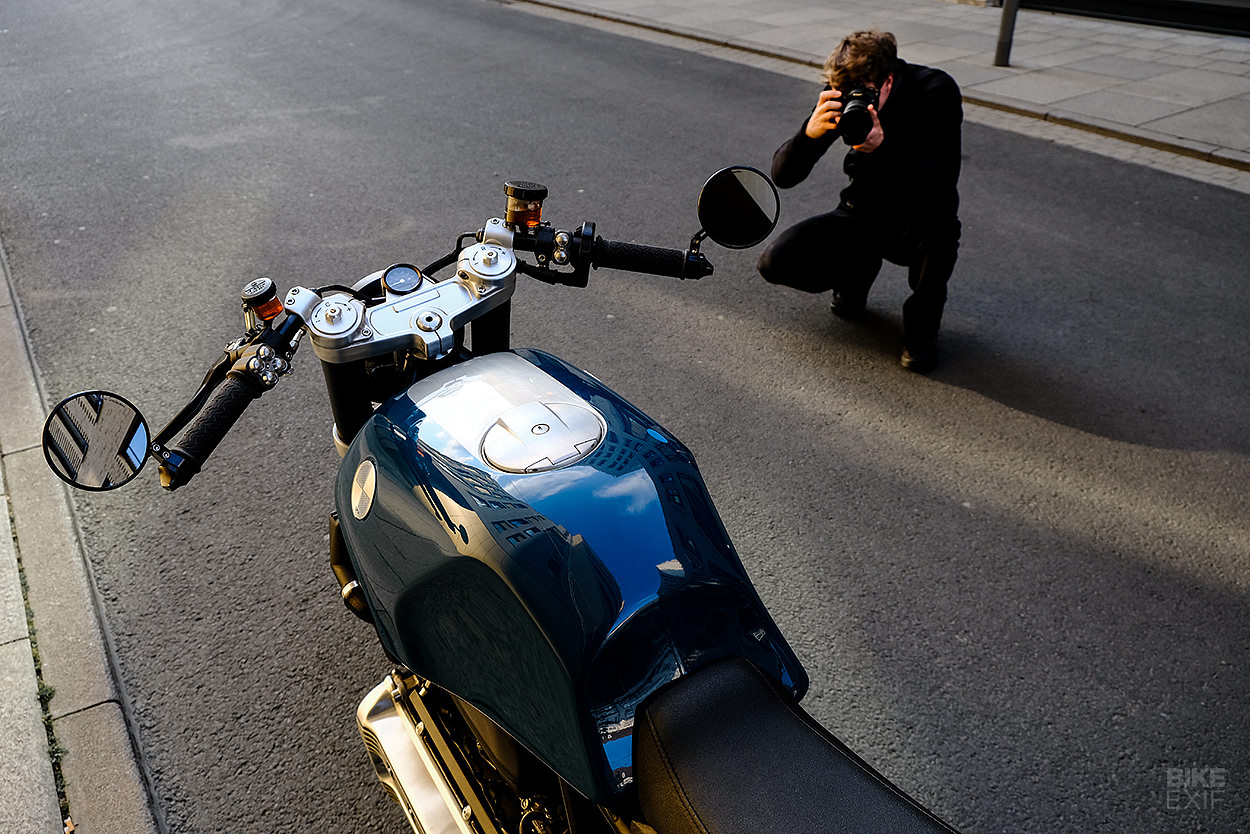
In the first stage of the build process, the bike won the Custom Award at a show hosted by the high profile Berlin community garage Craftwerk.
“I was lucky enough to get to know Nico and Max from Hookie Co., as well as the Craftwerk guys—who told me I should submit my bike to EXIF,” says Richard.
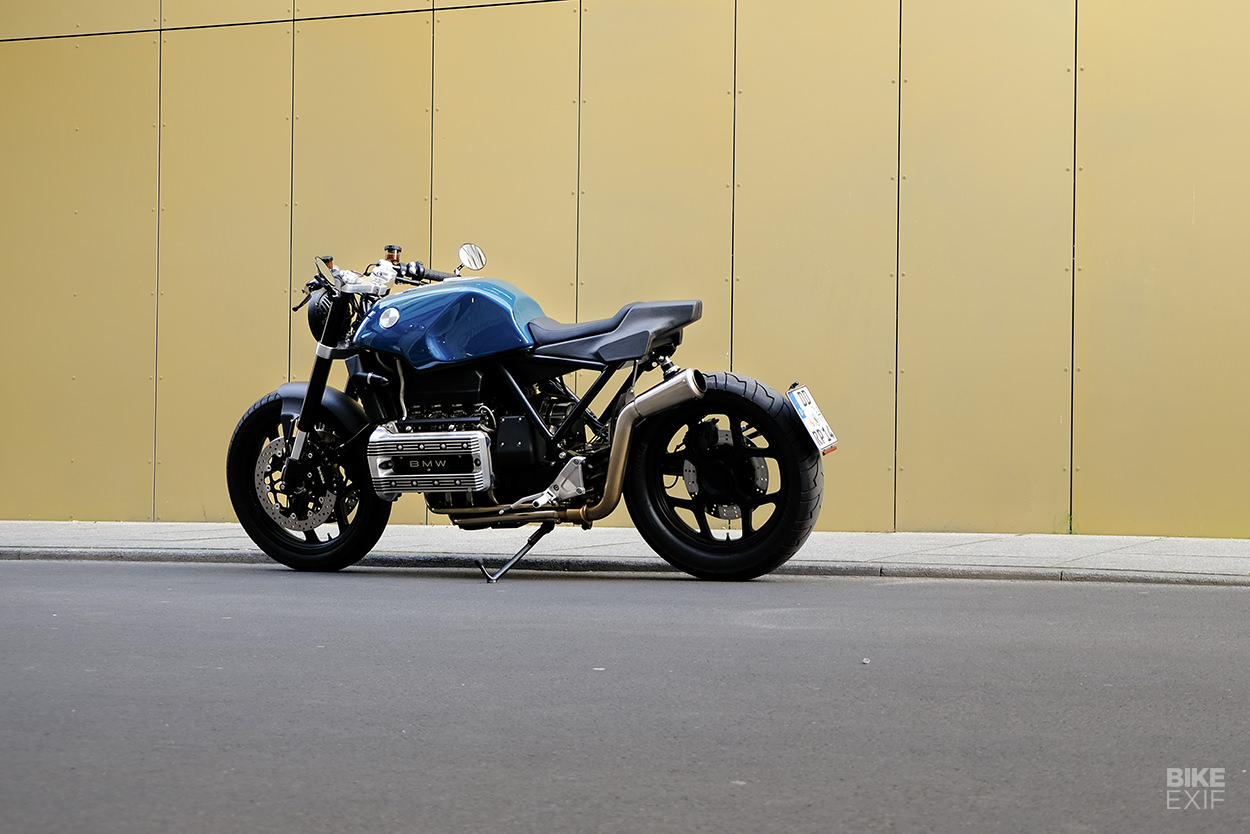
“It’s certainly not the most spectacular looking K, but it’s rideable every day. And most importantly, I learned a lot with this build.”
For a first build, based on such a tricky donor bike, it’s an astounding achievement. Richard Petzold is a name to watch.
